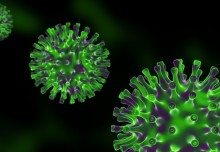

Small marine crustaceans are as valuable as key coastal habitats for storing carbon and should be similarly protected, according to new research.
The study shows that a single species, Antarctic krill, store similar amounts of carbon to key ‘blue carbon’ habitats such as mangroves, saltmarshes and seagrasses.
However, krill are also impacted by global heating and potential overfishing, so should be considered for similar protections as other important habitats, say the researchers.
Krill are eaten by larger animals in the Southern Ocean around Antarctica such as whales, seals and penguins, but are also fished for food and fishing bait, and for use in aquaculture and dietary supplements.
Lead author Dr Emma Cavan, from the Department of Life Sciences at Imperial College London, said: “For the past decade we have been piecing together the role krill have in carbon cycling, finally resulting in this amazing finding that krill, and their poo, store similar amounts of carbon as some coastal marine plants.
“I hope this means we can now work towards conserving krill and their valuable Southern Ocean ecosystem with the same gumption as we are seagrasses and mangroves.”

Published in Nature Communications, the study was led by researchers from Imperial College London in collaboration with colleagues from the University of Exeter, the UK Centre for Ecology & Hydrology, the British Antarctic Survey, the Plymouth Marine Laboratory and the Technical University of Denmark.
Co-author Dr Simeon Hill, from the British Antarctic Survey, added: “This study shows how we as people are connected to a small creature in a remote location. We benefit from its actions in removing carbon but we also affect it through our own actions which drive climate change.”
Serious value
Marine life has an important role in locking carbon away from the atmosphere in ocean systems, and the term ‘blue carbon’ was coined over a decade ago to describe the important role of coastal marine plants in this process.
However, the ocean has other ways to store carbon, away from the coasts, and one of these is through animals like krill. Krill are small (around 6cm) but extremely numerous crustaceans that live in the Antarctic seas.
They eat phytoplankton – microscopic plants that take carbon out of the atmosphere as they perform photosynthesis. When krill poo or moult their exoskeletons, the carbon they have absorbed sinks into the deep sea where it can stay for a very long time.
The new study shows that Antarctic krill lock at least 20 million tonnes of carbon into the deep ocean annually, which equates to $4-46 billion of storage value, depending on the price of carbon.
Co-author Professor Angus Atkinson, from Plymouth Marine Laboratory, said: “Antarctic krill are well known for being at the centre of the unique Southern Ocean ecosystem and supporting an important fishery. But this study paints another picture of krill – on their key role in storing carbon.”
Krill power
The power of krill for storing carbon comes from their huge populations, forming swarms of up to 30 trillion individuals that produce showers of large, fast-sinking faecal pellets and other waste products.
This drives a huge 'rain' of krill poo after feeding, making krill globally important for locking carbon away from the atmosphere. Dr Anna Belcher
Co-author Dr Anna Belcher, based at the UK Centre for Ecology & Hydrology, added: “One of the amazing things about krill is that they form massive swarms, which can be over a kilometre in length. This drives a huge 'rain' of krill poo after feeding, making krill globally important for locking carbon away from the atmosphere. So, let's make sure we look after these amazing crustaceans!”
The study also revealed that the depths that these waste products need to reach to remain stored away for at least 100 years were surprisingly shallow (average depth 381 metres), further enhancing their potential. In combination, these factors make the carbon storage from krill similar to that from coastal blue carbon plant stores.
As Antarctic krill are being impacted by rapid polar climate change and targeted by an expanding fishery, the team say both krill populations and their habitat warrant protection to preserve this valuable carbon sink.
Valuing this ecosystem in terms of carbon storage emphasises how crucial it is to meet climate goals and work towards including carbon in conservation policies.
---
‘Antarctic krill sequester similar amounts of carbon to key coastal blue carbon habitats’ by Cavan, E. L, Mackay, N., Hill, S.L., Atkinson, A., Belcher, A., & Visser, A is published in Nature Communications.
Supporters

Article text (excluding photos or graphics) © Imperial College London.
Photos and graphics subject to third party copyright used with permission or © Imperial College London.
Reporter
Hayley Dunning
Communications Division

Contact details
Email: press.office@imperial.ac.uk
Show all stories by this author
Leave a comment
Your comment may be published, displaying your name as you provide it, unless you request otherwise. Your contact details will never be published.




Comments
Comments are loading...